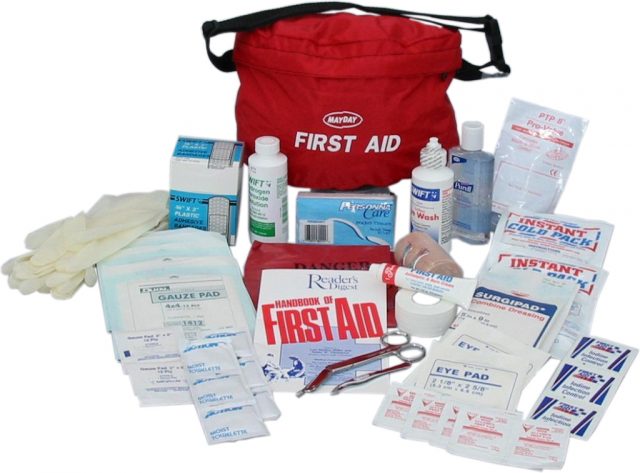A First Aid Kit is an essential tool for every family and community. While it cannot prevent accidents or emergencies, it plays a crucial role in alleviating discomfort and preventing further complications during accidents. A well-stocked First Aid Kit ensures that you are prepared to handle minor injuries, sudden illnesses, or emergencies effectively.
To maximize its usefulness, ensure that the kit is complete, easily accessible, and available both at home and in vehicles. It’s also wise to carry one during trips. First Aid Kits can be purchased as pre-assembled kits from drugstores or organizations like the Red Cross. Alternatively, you can assemble one yourself by collecting essential items individually.
Characteristics of an Effective First Aid Kit
An effective First Aid Kit should meet the following criteria:
- Complete Medications and Supplies. Ensure the kit contains medications for common ailments such as fever, infections, colds, diarrhea, allergies, and vomiting. It should also include wound care items like alcohol, betadine, and bandages.
- Up-to-Date Medications. Regularly check expiration dates and replace expired items with new ones to maintain the kit’s effectiveness.
Recommended Contents of a First Aid Kit
According to the Red Cross, the following items should be included in a standard First Aid Kit:
- 2 absorbent compress dressings (5 x 9 inches).
- 25 adhesive bandages (assorted sizes).
- 1 adhesive cloth tape (10 yards x 1 inch).
- 5 antibiotic ointment packets (approximately 1 gram each).
- 5 antiseptic wipe packets.
- 2 packets of aspirin (81 mg each).
- 1 space blanket.
- 1 breathing barrier (with a one-way valve).
- 1 instant cold compress.
- 2 pairs of non-latex gloves (large size).
- 2 hydrocortisone ointment packets (approximately 1 gram each).
- Scissors.
- 1 roller bandage (3 inches wide).
- 1 roller bandage (4 inches wide).
- 5 sterile gauze pads (3 x 3 inches).
- 5 sterile gauze pads (4 x 4 inches).
- Oral thermometer (non-mercury/nonglass).
- 2 triangular bandages.
- Tweezers.
- First aid instruction booklet.

Additional Tips for Maintaining a First Aid Kit
- Personalized Additions. Include items specific to your household’s needs, such as prescription medications, asthma inhalers, or an EpiPen for severe allergies.
- Regular Updates. Check the kit at least twice a year to replace used or expired items.
- Proper Storage. Store the kit in a waterproof and durable container to keep the contents safe and organized. Ensure it is in a location that is easy to reach in an emergency.
- Accessibility. Teach all family members where the kit is located and how to use its contents effectively.
The Importance of Being Prepared
Having a complete and well-maintained First Aid Kit at home, in vehicles, and during travel can make a significant difference during emergencies. It ensures that you are ready to provide immediate care, reduce the severity of injuries, and potentially save lives. Taking the time to assemble and maintain a First Aid Kit is a proactive step toward protecting yourself and your loved ones.


